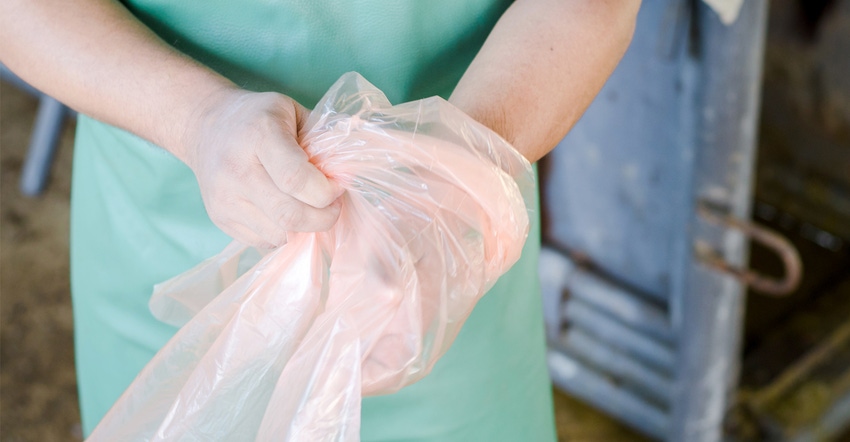
When it comes to calving season, Lindsay Waechter-Mead’s No. 1 rule is to be prepared. The clinical practice veterinarian at the University of Nebraska Great Plains Veterinary Educational Center said it starts with stocking the right tools in your calving toolbox.
Waechter-Mead uses an actual toolbox, one that is lightweight and portable, with plenty of storage for large and small items. One of the most important tools she suggests every rancher has is not a tool at all, and that’s your veterinarian’s contact information affixed to the box.
She also advises if you are a client of a multi-veterinarian practice, get to know each one of the veterinarians in the practice. “It’s a lot easier to build a relationship in the middle of the afternoon to get to know a face rather than at 2 in the morning,” she said. “Just get to know everybody that could possibly be there when you reach out and make that phone call.”
Waechter-Mead outlined what are her go-to tools during a recent UNL BeefWatch webinar. Now, here are five items to stock that toolbox:
1. Halter and rope. Properly restraining a cow or heifer in a chute or pen is important for the safety of the animal and the rancher. A hint that Waechter-Mead has learned both from practice, as well as working with her own cattle, is that cows tend to lay down with their feet toward the side that you have tied her head, so keep that in mind when loosely tying a cow or heifer to a gate or in a pen.
The rope can also be used to tie back the cow’s leg to prevent her from kicking over the colostrum “when we’re milking her out,” she said, “and we don’t want you to be kicked either.”
2. Obstetric sleeves and lube. “You can never have enough OB lube when you’re dealing with dystocias,” she said. She recommends a nonspermicidal generic OB lube that comes in gallon containers but can easily be transferred to a smaller squirt bottle for convenience. It will also fit better into your toolbox.
OB sleeves do not have to be one-size-fits-all. Waechter-Mead seeks smaller-sized sleeves to fit her “little hands and little arms.” It doesn’t mean that “I’m not strong, but it means that it helps me when I go in,” she said. “I can put both arms into that cow, but I do need to have a smaller sleeve.”
3. Disinfectants. Waechter-Mead is partial to a chlorohexidine solution, or one can use a betadine scrub or even just some diluted dish soap. She recommends having a bucket of warm water with the disinfectant solution handy. With it, she cleans the entire back end of the cow so that the perineal region “is as clean as we can get it. … We do not want [to get] manure into the birth canal.”
Having the bucket of disinfectant solution at the ready allows quick access to wash your arms, as well as a place to put chains or straps so that “it’s warm and ready to go when I reach down and get it.”
4. Chains or straps, and handles. Given a choice, Waechter-Mead prefers chains over straps for two reasons. First, she feels like it is easier to thoroughly clean chains compare to straps. Second, she feels that with chains, a producer or veterinarian can get more of a grip on the calf being pulled.
Buy a couple of handles that can hook on the chains to ease the calf-pulling process. “Honestly, you shouldn’t put more force than two people to pull a calf, and if you can’t get it out with two people’s force, it probably won’t come out that way, or you shouldn’t pull it out that way,” she said. “So, you don’t even necessarily need to have a calf jack. … But these handles will help you get a lot of pressure if you have one and another person has one, and you pull when she [the cow] pushes, and you rest when she rests.”
5. Towels and rags. After a calf is born, it is important to rub down the calf to both dry it off and stimulate breathing. “Rubbing will stimulate the phrenic nerve, which is a nerve that innervates into the diaphragm,” she said. “That helps them take that breath and stimulate them to start breathing.”
Another trick to stimulating breathing, Waechter-Mead said, is to either stick a finger in a calf’s nostril or tickle the muzzle area with a piece of straw bedding.
Visit YouTube to see Waechter-Mead’s full presentation.
About the Author(s)
You May Also Like






